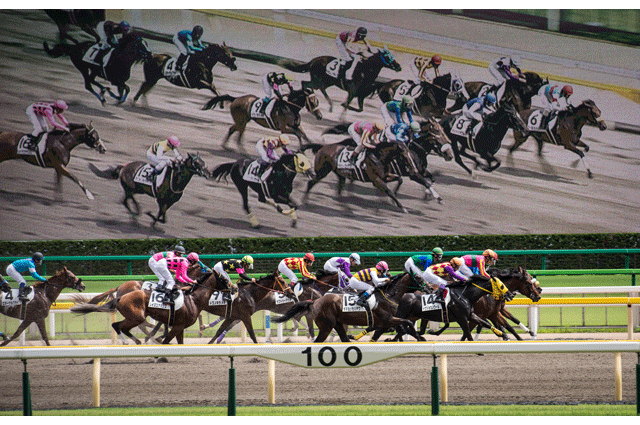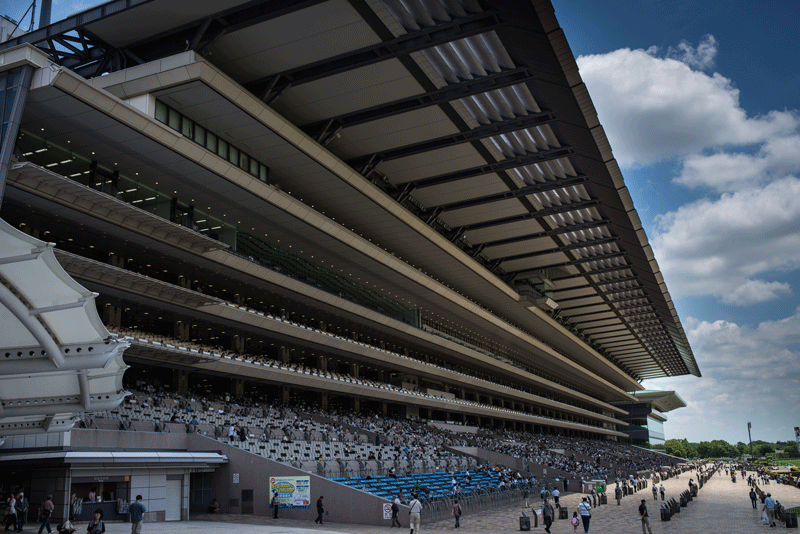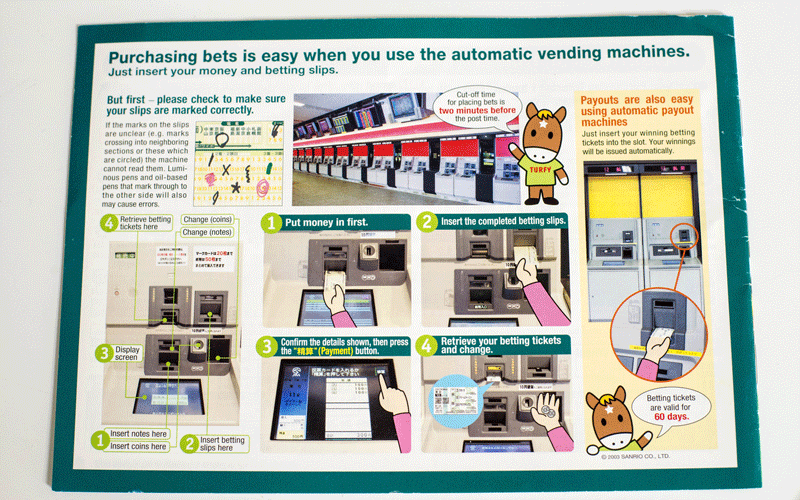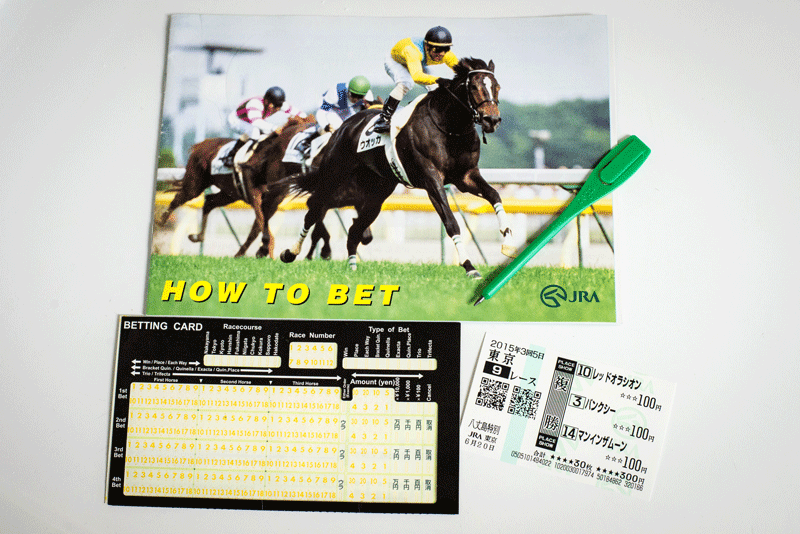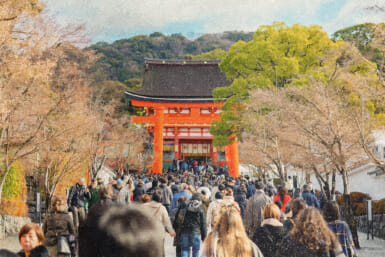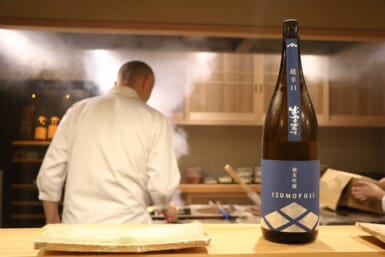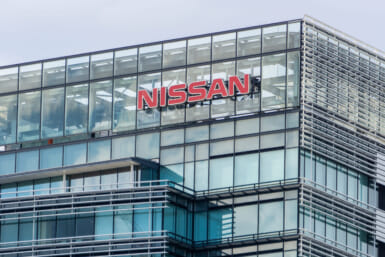Leave your fancy derby hats (and your preconceptions about horseracing) at home and prepare yourself to enjoy a nice, family friendly afternoon at Tokyo Racecourse in Fuchu City, Tokyo.
Article originally written by Angela Schnabel and published on Tokyo Cheapo
Where I’m from in America the horse track sparks images of ladies wearing huge hats, men in breezy seersucker suits, and everyone drinking mint juleps while they cheer on their own horses from the owner’s boxes. That, or die-hard gamblers who are there to try to gain the favor of Lady Luck.
Of course you see the Japanese version of that, too, but my husband and I were surprised to learn that these days in Japan the horse races are generally considered a family affair. Even our friends who weren’t betting had a great time watching the horses.
At Tokyo Racecourse there really is something for everyone. You’ll find a variety of beer, good food, a large activity area for kids, and a gift shop featuring “Turfy,” the racecourse’s adorable character mascot. If you’re lucky, you might even walk away a winner!
It’s not an expensive destination: it only costs ¥200 to get in, and you can bring your own snacks if you want. Even though you’ll be given a map at the gate, it can be a bit overwhelming after you pass through the entrances because it’s a huge complex.
Look to your right, and you’ll see the horses right away. After looking at the map, make your way to the betting counter or the information counter to get more information in English.
We went on a non-major race day, so there were plenty of seats to choose from both inside and outside. You even have the option to go sit on the grassy area in the middle of the racetrack if you want to. I noticed that there was also lots of space for people to sit on the grass and have a picnic, or just kick back and relax. Be sure to check the race schedule, though, because on cup race days you will be hard pressed to find a stadium seat.
The best part of our day at the racecourse was how easy it was to participate in betting on the horse races, even without knowing the language. Our Japanese friends took us to the staffed counter area near the automatic betting machines. There we were able to get English betting instructions, the list of the day’s races, a pencil, a betting card, and a betting card translator tool.
I have never seen anything like the betting card translator before, and thought it was such a brilliant idea. You just slip the Japanese paper betting card inside and match up the lines. Then, open your “How To Bet” book for an explanation of what kinds of bets you can place, use the pencil they give you to mark your card indicating your bet, and take it to the automatic betting machine.
The hardest part is deciding what horse to bet on—the rest of the betting process was really easy! First you insert your money, then you insert your betting card according to the diagram on the machine. Out comes your betting ticket! It’s a small white ticket that shows your bet, horse numbers, and the cost of the bet. Now you just go back to your seat and wait for your race to begin so you can cheer your horse(s) on to victory.
I found the race itself to be rather exciting, even though I personally don’t have a big interest in horseracing. Initially I just went to see the horses, enjoy a good time with friends, and bet a few times (because you can’t win if you don’t play, right?). However, I soon found myself cheering along with everyone else as we all shouted “ganbaru!” (Go! Do your best!) together.
After the race is over you’ll see the winners and their places displayed on the big screen. If you’re a winner, just take your ticket back to the automatic machines, insert your ticket, and collect your winnings!
I won a small amount, 450 yen on a 100 yen bet, so I feel like it was a successful day for a non-serious gambler like myself. I did find one similarity to racing back home. It was the mixture of boisterous cheers and disgusted groans of the spectators as they jumped up and down shouting in excitement, or threw their losing tickets into the air. Victory and defeat still feel the same in any language.
Access: Tokyo Racecourse in Fuchu City | 1-1 Hiyoshi-cho, Fuchu-shi, Tokyo 183-0024
- 2 minutes’ walk from Keio Line’s Fuchu Keiba Seimon Mae Station to the Main Gate using the special overpass. (Approx. 22 minutes from Keio Line’s Shinjuku Station by limited express or local limited express, transferring at Higashi-Fuchu Station, on days when the Tokyo Racecourse has live races)
- 10 minutes’ walk from the South Exit of Keio Line’s Higashi-Fuchu Station to the Racecourse East Gate. (Approx. 20 minutes from Keio Line Shinjuku Station by limited express or local limited express on days when the Tokyo Racecourse has live races)
- 5 minutes’ walk from the special ticket gate of the JR Musashino Line / Nambu Line Fuchu-Honmachi Station to the West Gate using the special overpass.
How much: 200 yen to enter. Food, drinks, and betting cost extra.
More information:
http://japanracing.jp/en/index.html
http://japanracing.jp/_pdf/go-racing/jra-racecourses/leaflet/tokyo/english.pdf
Image: courtesy of David Schnabel

